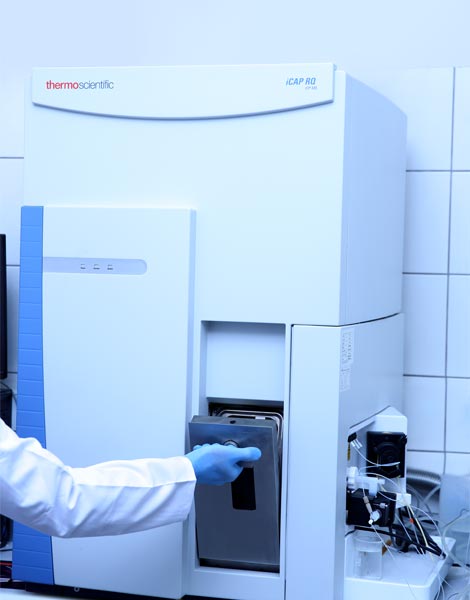Heavy Metal & Mineral Analyses
Metals are elements that are naturally found in nature and can reach people with foods consumed even in trace amounts. Metals are mostly transferred from the environment to the developing product in the field, to the milk and meat of animals fed with this product, and from the aquatic and marine environments to aquaculture.
What is Metal?
Metals are elements that are naturally found in nature and can reach people with foods consumed even in trace amounts. Metals are mostly transferred from the environment to the developing product in the field, to the milk and meat of animals fed with this product, and from the aquatic and marine environments to aquaculture. Apart from this, it is also possible to contaminate the raw material from the environment and the product being processed during the production phase. In addition, heavy metals can be found in many industrial wastes and in groundwater contaminated by wastes, soil and air. For these reasons, metals have a special importance among other chemical pollutants, since they can easily enter the food chain and accumulate in living things in increasing concentrations.
Why should heavy metal and mineral analysis be done?
The metal level of the food has an important place in food safety and determining the nutritional values. Exceeding certain doses of certain minerals, in particular, poses a serious threat to human health.
If the effects of heavy metals in human metabolism and the stages in which they are active are briefly discussed in terms of main systems, these can be classified as;
- Those that affect chemical reactions,
- Those affecting the physiological and transport systems,
- Those that affect the building blocks of carcinogens and hereditary,
- Those acting as allergens,
- Specific influencers.
Although only 1-1.5% of the gases in the air are volatile heavy metals, the accumulation of these substances causes many discomforts today. These Substances can cause irreversible damage to our vital organs such as liver, brain, bone marrow and kidney. Especially with the revealing of the effects of heavy metals on human health, metals such as lead, cadmium, chromium, tin, arsenic and mercury, and metals such as iron, copper, zinc, magnesium, manganese, potassium, sodium, which may pose a health hazard when a certain dose is exceeded, the levels in foods were determined and legal restrictions were established. These limits are based on national and internationally accepted publications, and maximum limits that will not harm human health in consumption have been determined by the ministry. Heavy metal and mineral analyses should be made in foods and feeds in line with these limits.
Our Mineral Analysis Services
Food, food additives and feed, feed additive analyses of metals and heavy metals that may affect consumer health in terms of food quality and safety is carried out with ICP-MS, AAS-F (Flame), AAS-G (Graphite) and AAS-H (Hydride) devices in our mineral laboratory.
In our mineral laboratory, analyses are made for lead, cadmium, mercury, iron, chromium, copper, sodium, nickel, tin, zinc, aluminium, calcium, selenium, antimony, arsenic, potassium, manganese and magnesium elements in foods and feeds.


